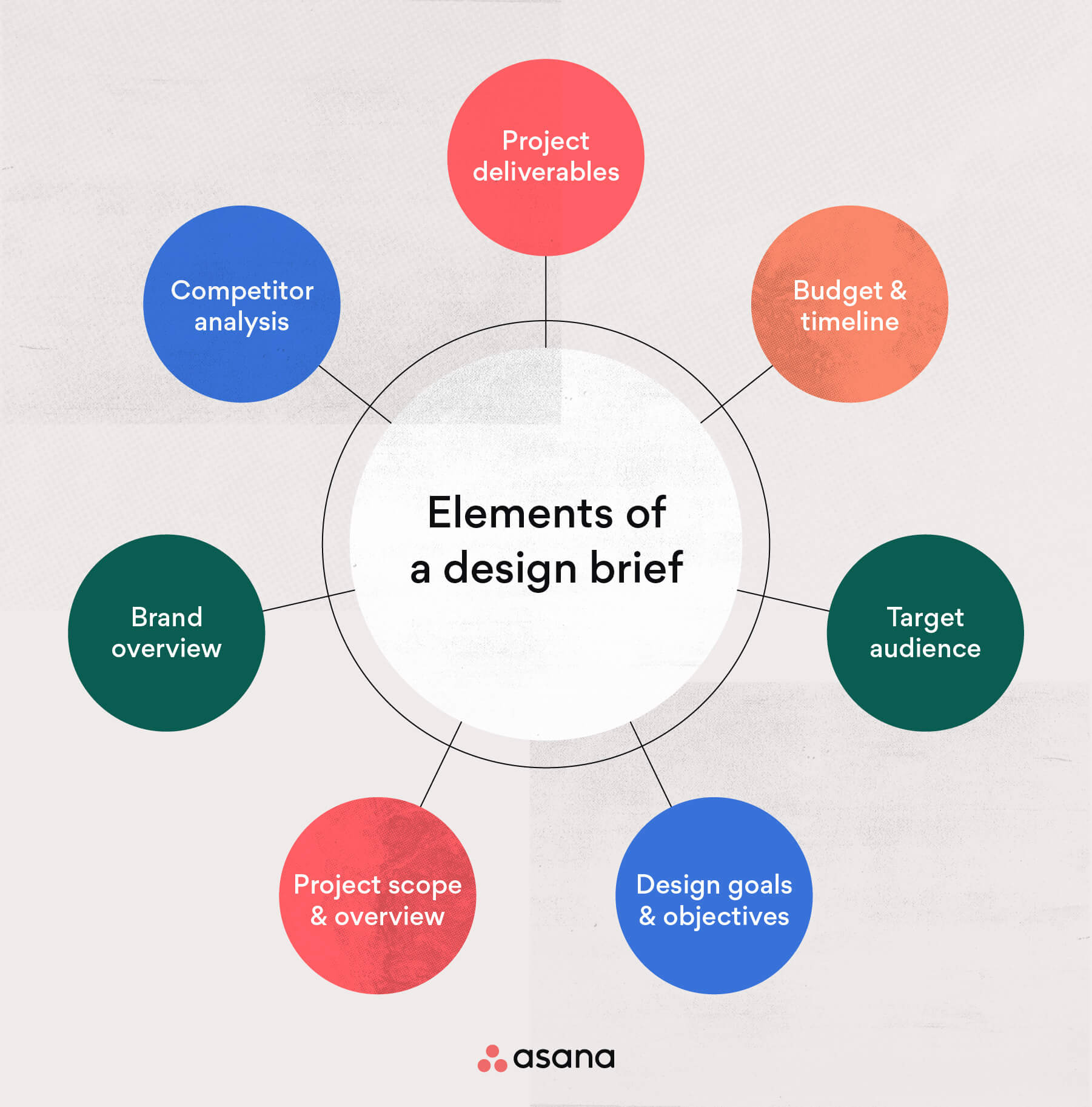The 1-2-3 guide to creating a design brief (template included)
A well-crafted design brief delivers clear information that saves designers time and mistakes. Let’s look at the simple guidelines for creating one.

Forty percent of shoppers believe images and color are vital to a company’s brand. So, when it comes to enhancing your organization’s graphics, do you have a design brief prepared?
Since a well-crafted design brief delivers clear information that saves designers time and mistakes, understanding how to formulate one is essential.
First, let’s look at the types of projects where a company would need a design brief.
Key takeaways:
- For a design project, a requestor commissions a designer to create a visually appealing element for their business.
- A design brief is a document containing vital criteria and instructions to assist a designer in understanding the context and needs of the project.
- A well-crafted design brief helps the creative team avoid making arbitrary decisions, miss project goals and reworking the project.
- Knowing the client’s competitors can help the designer create a work highlighting the brand’s uniqueness, so it stands out among rivals.
- State the budget and timeline in the brief so the designer can determine if they accept the project and, if they do, optimize the time and resources spent.

What is a design project?
With a design project, a requestor commissions a designer to create a visually appealing element for their business. Examples of a design project include:
- creating the company logo
- designing the organization’s website
- a video or animation for television advertising
- a digital or printed brochure for a marketing campaign
By the end of the project, the requestor should receive a design that communicates a key message or concept in a unique and visually captivating way.
Why need a design brief
Understanding the project’s requirements could be the most crucial part of the design process. To that end, requestors should fill out a design brief before the start of the project. This document contains vital criteria and instructions to assist a designer in understanding the context and needs of the project. A company can include supporting documentation in a design brief, such as further reading and marketing guidelines.
There can be two types of design briefs: open or closed. An open brief offers the design team more creative freedom, while a closed brief offers less. For instance, an open brief may allow designers to choose colors and font styles. On the other hand, with a closed brief, the company specifies the swatches and font family associated with their brand.
A design brief helps the creative team in the following ways:
- They avoid making arbitrary decisions.
- They don’t miss project goals.
- It prevents disputes with the client.
- It minimizes the designer’s need to rework the project.
- It builds trust between client and designer.
Building your design brief
While the terminology varies across industries, a design brief contains information universal to all businesses, such as goals and requirements. We’ll break down the information into six sections. Following that, there is a generic sample template available for use.
1. Brand overview
Here, the designer gets to know the client. Aside from providing the company name and contact information, go deeper into describing the business. For example:
- The company is part of what industry?
- What’s the company size?
- How long has it been in business?
- What product or service does it provide?
- What does the client love about their company?
In-depth knowledge of the brand allows the designer to create according to the client’s taste.
2. Project scope
Next, the requestor describes the project. Some questions to guide the information provided included:
- Why does the company need the designs? Is it to increase sales? Raise brand awareness?
- In what format should the designer provide the work?
- If working on an omnichannel marketing campaign, will it include social media? If so, which platforms?
- Is there specific text the project must include? Will the company provide it, or will the creative team write it? The same applies to images.
- Are there any design elements the client doesn’t like and wishes excluded?
3. Target audience
When describing the target audience in a design brief, include the following:
- Age, gender, ethnicity
- Level of education
- Marital status
- Occupation and income
- Shopping behaviors
- Hobbies, beliefs and values
Including a buyer persona is also helpful.
4. Competitors
Knowing the client’s competitors can help the designer create a work highlighting the brand’s uniqueness, so it stands out among rivals.
A designer could conduct usability tests with competitors’ products to show how the client solves customer pain points.
5. Tone
The tone can encompass a range of elements. Here are some examples:
- Do they want the message to be formal, technical, relaxed or informal?
- What colors does the client wish to incorporate? Green conveys serenity, while blue is business-like.
- Does the company prefer block fonts that show formality? Or do they like cursive ones that are humorous?
- Should the artwork be professional or quirky?
6. Timeline and budget
State the budget in the brief so the designer can determine if they accept the project and, if they do, optimize the time and resources spent.
The timeline should be realistic, accounting for the various stages of the design work ( e.g., technical consulting, development, execution, production, and delivery.) Again, providing the timeline helps the designer determine if the task is feasible.

7. Sample template
GENERIC DESIGN BRIEF TEMPLATE
|
PROJECT TITLE |
|
||
|
BRAND NAME |
|
||
|
BRAND DETAILS (e.g., company size, years in operation, mission statement, etc.) |
|||
|
PRODUCT |
|
||
|
CLIENT NAME |
|
PHONE |
|
|
|
|
MAILING |
|
|
|
|||
|
PROJECT |
|
||
|
OBJECTIVE |
|
||
|
TARGET AUDIENCE |
|
||
|
COMPETITORS |
|||
|
TONE |
|
||
|
MESSAGE |
|
||
|
DELIVERABLES |
|
||
|
SCHEDULE |
|
||
|
BUDGET |
|
||
|
COMMENTS |
|
||
Partner with Optimizely to create stunning visuals
Optimizely can help your marketing teams create engaging campaigns to grow your business. Or we can assist developers in enhancing your website. Our team of experts, combined with our state-of-the-art digital platform, will deliver the desired results.

